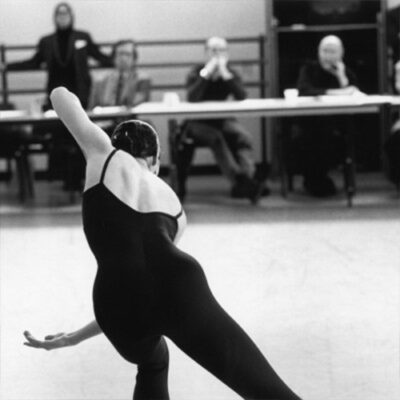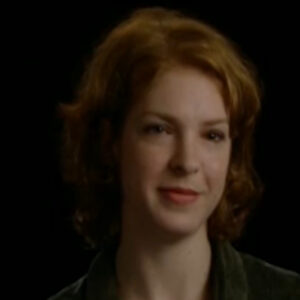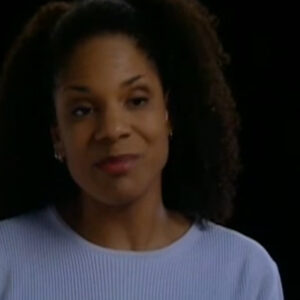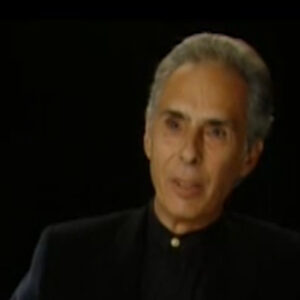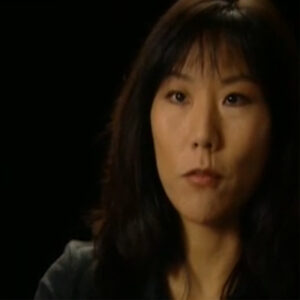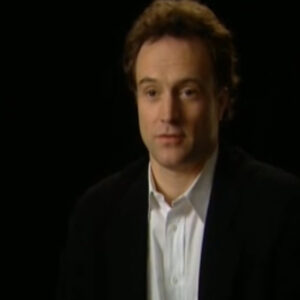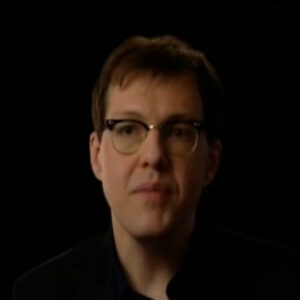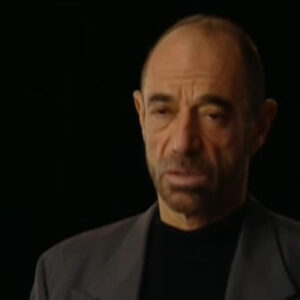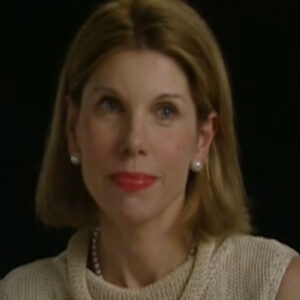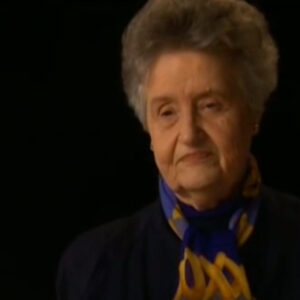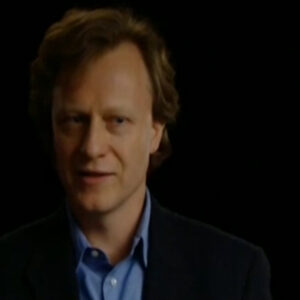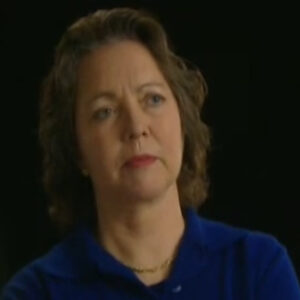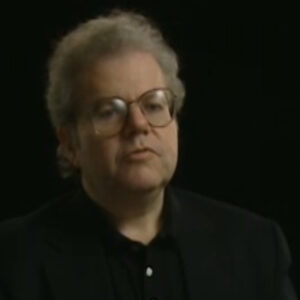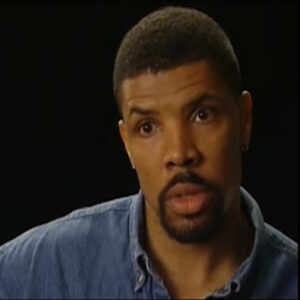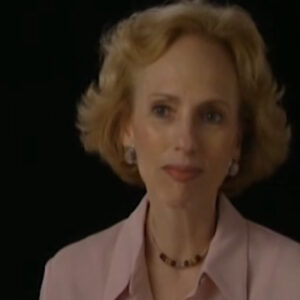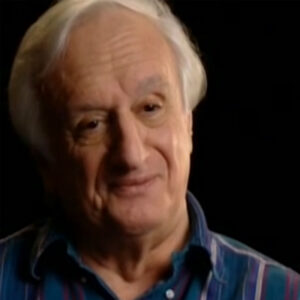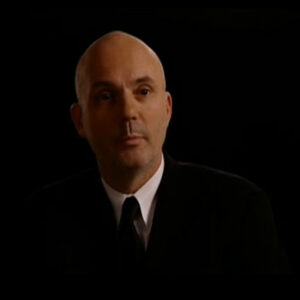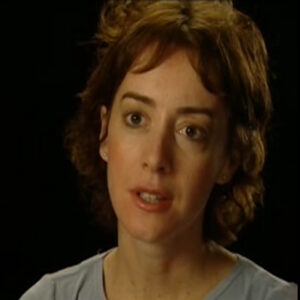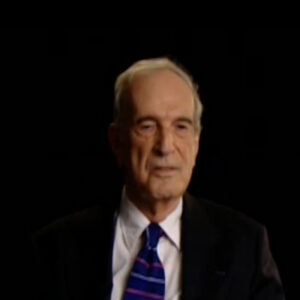Speaker We’ll start early on to tell me a little bit about your own. You know, we’re growing up in New York City.
Speaker What was what was your own entree?
Speaker Well, my beginning as a music started in seventh grade in junior high school in Queens. And my father, of course, at the same time was principal of service to the New York Philharmonic. So there was a lot of music at home. And my music teacher signed me to play the cello, which I was happy to do. And then he checked my name and said, Isn’t your father in the New York Philharmonic? And I said, yes, he is. And he called my father and told my father that he needed a bassoonist. So I was transferred to another class and I started the bassoon. And I was very happy to do that. It didn’t really bother me. So I started in seventh grade as a bassoonist and continued in that route. But my dad knew the field very well and.
Speaker He said, if you’re a good bassoonist, then you could make it. But is this really what you want to do? You better be passionate about it. And I wasn’t quite sure.
Speaker So I got an undergraduate degree in political science and then went to get a master’s degree in international relations at Fletcher School at Tufts. And then I realized my passion was there for music. So then I continued on graduate degrees at Yale.
Speaker Talk to me a little bit about your memories of being a student and your father was teaching at Juilliard. What were your early associations with, you know, the school from that?
Speaker From my early associations with Juilliard. And they were very early took place because all of my father’s colleagues in the New York Philharmonic were many were were on the faculty at Juilliard. And dad will always talk about going to the annual jury examinations at Juilliard and always the admissions events as well. And it’s funny, my recollection of it is, aside from talking about the musicians and the talent, he’d also talk about the wonderful buffet in the bar that they had afterwards. So it was a it was a congenial environment as far as I could remember. My father talking about it, in which all of these wonderful musicians from Metropolitan Opera Orchestra, the New York Philharmonic, freelancers in the city would come together who were on the faculty to evaluate young talent and then to have a drink together.
Speaker And those were, of course, you know, your first walk through the door must have been listed in Claremont Avenue. I mean, what was that? What was Clairemont Avenue like when you were young boy? You would go up there and this is a smaller world than it is now.
Speaker My first time in the Juilliard building in 120 Second Street was I was visiting really a boyhood friend who who was a very fine oboist and he was a freshman at Juilliard. And I was at the University of Connecticut as a political science major. But, of course, I had heard about Juilliard, but I’d never really been in the building until around nineteen sixty five or so. And he took me to a social dance. It was a dance on a Friday night and it was fascinating for various reasons. First of, I did know that Juilliard had dances. I thought they were all doing classical music and it was a rock band and the rock band was composed of Mike came in and another gentleman named Marty Voltaren in a group called A.M. and the detectives, I think it was called. And then they eventually became the New York Rock and Roll Ensemble. And we had this great time at Juilliard and it had a dance. And I saw Mike, who I knew from all city orchestra as well, and in New York City as well as Marty.
Speaker So it was a fascinating introduction to Juilliard that one wouldn’t think of it ordinarily.
Speaker And then what was that? What was the building like? What was the environment there?
Speaker I mean, this was the 60s, you know, pretty casual.
Speaker We’ve heard about the early days, the white gloves and the culture, the 60s.
Speaker It must’ve been a pretty interesting environment.
Speaker The environment was. Yes, it was very interesting. It was a very vital environment as far as I understood.
Speaker These were my classmates now making music where I was doing political science and I was envious of it. Is that a great orchestra or a great chamber? Music activities is incredible mix of extraordinary young talent.
Speaker And, you know, it’s really important to note that for the first time that a young performer is surrounded by excellence in an orchestra or a chamber ensemble or if you’re a soloist in front of an orchestra.
Speaker It’s a it’s a remarkable experience to feel the quality around you and to into to experience it being part of that. And listening to the orchestras and things like that. When I was a very young kid, I was quite envious. Of course, it’s a great building. It. It was all sound isolated and. And I was Dean at Manhattan School of Music in the early 1980s. And that’s where Manhattan is now. So I got to know the building in that way as well. And it was designed that he was opening in 1910 or so. In fact, I think the the opening day speaker was Woodrow Wilson, who was not yet president of the United States. Of course, he was president Princeton at the time and or just been president. And it was quite extraordinary to see how that building has lasted over the years. It’s a great conservatory building.
Speaker And when you say conservatory building, I mean when you were growing up, I mean, your father was a musician. But what was this kind of I mean, there’s this incredible conservatory, MIT. I mean, I’ve been looking and pulling old movies like, you know. You must work. You shall not be alive. I mean, what was it like when you were growing up? What was what was this? What. Was the conservatory myth dispelled because you were from a musical family, or what did it mean to go to a conservatory?
Speaker The idea of being a really good musician was linked in my time in high school and in college as coming from a conservatory. I think that’s perhaps different. At least in my mind today. But a sense that there are so many university based institutions as there was then. But my environment was through my father, through my friends. And that was Juilliard. And it’s an intensity. It’s a striving for excellence. It’s an extraordinary level of technique. It’s sort of funny when I think back to being a 15 year old as a bassoon, as myself and being in the all city orchestra and seeing all of these amazing kids play faster and louder than I could, and then saying to myself, gee, I’ve got to get that.
Speaker I’ve got to play that well as well. And really working on the whole process of being able to play effectively and in control so that you stood out.
Speaker It was a great sense of pride. I mean, it really has.
Speaker It does have a clear analogy in my mind to be an actor, being an athlete, to do winning the race, to training hard, to working well under pressure. All of those types of aspirations that one talks about, mostly in United States in reference to sports. There are clear linkages as far as I’m concerned, to being a performing artist.
Speaker And what did you know? I mean, Juilliard at the time.
Speaker Even when your father had gone there, what was the what was the legacy of Juilliard at that time? What was it? What was the sort of.
Speaker Sort of law school knows the legacy and the traditions and the reputation of Juilliard. When I was a high school kid and I think I was. I don’t know if objective is the right term, but I certainly didn’t have a vested interest in being there because at the time I decided I was going to take another educational path. The reputation was that this is where you went if you wanted to be a superb musician and that you were surrounded by superb musicians. And of course, at that time were dancers as well. Drama didn’t start till 68. So as a high school student and working with my father, who was my teacher, by the way, in bassoon.
Speaker It was, well, if you want to be a professional musician, you go to Juilliard. And that’s what I knew.
Speaker And do you think that this sort of. Well, we’ll come back to that, actually.
Speaker I’m just thinking about this this sort of idea of but. Well, look, let’s let’s if we can, because we’ve we’ve gone through a little bit, but talk about. What the history, Julie, I’d really thought it was as as he is, you know, so to speak. I mean. You know, just just the basic sort of thumbnail start of the school.
Speaker I think that the history of the Juilliard School represents. In some ways, a microcosm of what the performing arts were in America in the 20th century. If one looks at it, its earliest roots, the Institute of Musical Art in 1985, trying to replicate the European traditions that were known and respected in those days. But in the United States and then working through the First World War and the immigration patterns that took place not only for artists and teachers, but also for the general population. It’s a fascinating mix of of the various groups that came to the United States in hopes of achieving a new and better life, perhaps. And one sees that through the history of Juilliard, that in the arts, as in perhaps once again in sports, you are judged on your ability. And I think that’s a very, very good thing. And I think that’s been Juilliard tradition from its very beginnings that they would try to bring into the institution the students that had the greatest potential to grow as as as artists. So from 1985, where one has a tradition of European conservatory type training and that stays for a very, very, very long time through World War One. And then the death of of August Juilliard in 1919 and the extraordinary bequest of of at least eleven or twelve million dollars to. In those days to create a European type conservatory in the United States. Now that’s separate from the original Institute of Musical Art that existed back in 1985 with Frank Damrosch and the two merge in the late 1920s with the direction of John Erskin. And one sees also a merging of expectations because the original Juilliard Graduate Institute was a full scholarship program. In some ways, looking towards the soloist, looking towards the non orchestral player and and that evolves until we get until the 1945 and the appointment of William Schumann is president. And it was really Bill who transformed the institution and made it look towards the future in a very, very aggressive way, taking American roots. Now taking the European traditions, of course. But it was Bill who who who allowed Juilliard to face to the future and made it a very distinctly American institution. And what I mean by that is that there was a.. A.. A integration of academic studies, with performance studies, with the idea that the individuals, the young people who went to Juilliard really had to grow. Not only is complete musicians the time, but also complete human beings. And it’s it’s his leadership. It’s his programs of all literature, materials of music program, all the festivals that he created, this Juilliard string quartet that that really brings Juilliard in into the 20th century of America and a very strong way. And, of course, economically, politically as well, there’s this confluence of the United States after World War Two being one of the great powers, along with the Soviet Union. And one sees the juxtaposition of the continuing great traditions, very European base that one sees in Moscow of training in Marcus, Moscow and St. Petersburg, in music with the Juilliard School, and going in a different direction in terms of American traditions. And the the wonderful juxtaposition there comes about with with Van Cliburn winning the Tchaikovsky competition and in the late 50s and the political artistic problems and successes that took place with that. And also, the visibility that came with this prize of an American artist winning in Moscow at the height of the Cold War was not only something that justified a ticker tape parade, but it it put a spotlight on Juilliard that happily, I don’t think has has been removed. In other words, looking at Juilliard as a place that that does educate and train the very best young artists of the next generation. And then, of course, the monumental move that took place. In terms of decisions in the late 1950s with Bill Schuman indicating and working with John D. Rockefeller the third and having Juilliard be the educational institution at this new place called Lincoln Center for the Performing Arts. And it was really Bill Schuman’s leadership that made that happen.
Speaker Now, what do you do if you want?
Speaker We should stop here with these seven, Tony Shepherd. There they were in there a little bit.
Speaker As far as you know.
Speaker Tell me a little bit about, like, you know, Frank defamation and Loeb and what they what their original. Philosophy was because there was there was no conservatory in New York when they began the IMF. I mean, what was that? What were they? What was the original sort of philosophical concept of the IMF at its founding?
Speaker I think that Frank Damrosch clearly wanted to replicate the European traditions of conservatory training in the United States, that he was frustrated about the idea of Americans having to go to Europe and to to continue their studies or to finish their studies. And in music, there had, of course, been institutions in the mid eighteen hundreds that existed in Boston and in Baltimore and even in New York City having to do with musical training. But I think, damn, Rush’s point of view was one of seeing if they could create a a professional level of training. And his benefactor was James Loeb, who who in fact, never knew what he had created because for the most part, he was in in Europe for this this whole time when when Damara started creating the Institute of Musical Art.
Speaker And what was, you know.
Speaker Philosophically, it seems like from. This sort of opened to the public from the very beginning, it was men, it was women. It was people of color. It was it was it was it was this sort of open, you know. Very much about, you know, making this kind of music desirable, interesting to the public, reaching out to people to kind of create this. It’s almost like a communal sense of music.
Speaker I mean, in my unfair interpretation and such.
Speaker Well, I think the the curious issues that that involve Damrosch in the beginning of InSitu musical art. That always fascinated me as a desire for professional training and in high standards in one sense side. And at the same time, his desire to bring in members of the community and to to make music making an important part of their lives. I certainly know that initially the size of the Institute of Musical Art was comparatively small and it ballooned in over a period of two or three years because the Damrosch didn’t expect the interest to be as great as it was. And it’s also interesting when one looks at the juxtaposition of the goals of the of the original Julia Graduate Institute and the Juilliard Musical Foundation, where there was a completely different view of training. It was it was much more professionally focused so that when we look at the roots of the Juilliard School going back to 1985, it into the 1920s and now and the beginning of the 21st century, it is this wonderful mix of a desire to have a community impact for a very, very broad audience. But at the same time, to have a very specific focus on professional training.
Speaker And and tell me what what you know about about the two the two schools, you know, merging three such that the money, the money got left, but then how did they do?
Speaker What did they do with it?
Speaker It was sort of left in this very ambiguous way, you know, instead of musical art, was was was always in my take an institution that.
Speaker They had broad based goals for musical training. Yes, they were professional standard individuals for sure. But there were also a larger group that was perhaps someday would not have become a professional necessarily. And Juilliard, of course, was the Juilliard Graduate Institute was the other side of the pole. There was this real emphasis on professional training. But one of the major differences was that the Julia Graduate Institute came with this enormous corpus, this endowment from Mr. Juilliard as well. And that financial impetus eventually brought the two institutions together, the need for the Institute of Musical Art to have that financial support and also for the standards and the procedures and the administration of the Juilliard Graduate Institute to gradually take over the influence of Mr. Damrosch leads to musical art. So that by the early 1930s, the Juilliard Graduate Institute has had a greater influence in terms of policy, certainly financially, than the Institute of Musical Art.
Speaker And Mr. Damrosch leaves in the early to mid 1930s, to some degree, perhaps being forced out. He was an older man by then, but I don’t think he would have left if it had been entirely his operation. It was shifting to have a greater difference in emphasis and influenced by the Juilliard Graduate Institute. And then, of course, it’s in 1945 that that Bill Schumann really merges the two institutions frequently. When I talk to students who go alumni who were at the Juilliard at that time in the 30s. They talk about the separation between the Graduate Institute and the Institute of Musical Art, and they try to differentiate that the which student they were.
Speaker Well, the thing I find put this over the top.
Speaker You know, I was just looking at times that we were noting that it says Jonathan President, but that it actually with a separate as much as the dean of the graduate school right down dean of the institute.
Speaker It was like for a long time, they were sort of unable to to fully, you know.
Speaker Merge. And that wasn’t the intent. They they I don’t think certainly originally there was no intent to merge.
Speaker They they saw themselves as two institutions with different missions, joined by a common language of music. But financially, I think they were really forced to come together. Of course, this is this is the Great Depression. And they had to find the resources to continue to exist. And the resources were clearly on the on the Juilliard Graduate School side.
Speaker And then.
Speaker And tell me a little bit about what what you know of the of the sort of leadership of that time, I mean, that Erskin and Hutchison.
Speaker I mean, what do you want? What have you known or read about them or heard from people who were there at the time that they were there?
Speaker John Erskin in this period in the 20s and 30s was a great artistic figure, primarily because of his writings. And he was based at Columbia as well. And I there’s no question that he brought a great deal of academic and artistic credibility to running this new organization.
Speaker Ernest Hutchings was a step down. I’m not absolutely sure. I think he’s the fellow from Australia. And he’s a pianist from Australia. Yes. So I’m.
Speaker Well, Ernest Hutchison, I don’t know that much about him either, I should say I’m highly behind on Earth as much as it was the bursting of the Juilliard Graduate School.
Speaker But if we can go on that path, he was president, too, for why wasn’t he?
Speaker Yeah. Afterwards, yeah. There’s only been six presidents of Juilliard. I mean, over the years from. Right. Right. Actually, quite confined. I mean, people group, they’ve held onto it like an orchestra.
Speaker Well, let me see if I can pick up here or.
Speaker I did. Yeah.
Speaker His name’s Emily Hutchison. Hutchison. Hutchison. Right. Exactly. I mean, I. Well, OK. I’m. I’m murky on this. I.
Speaker Okay. Yeah. Yeah, well, somebody will either not or will fill it in somehow. But. But it seems the way their transition was really not actually all that long because, Bill. I mean, how did Bill Schumann come into the picture?
Speaker William Schumann in the early 1940s was considered one of the great young American composers. And in fact, he was the first recipient of the Pulitzer Prize in 1940 43 in music. Bill was teaching at Sarah Lawrence College. Had been involved in innovative efforts in music education there. And there had been some impact around the country as well. And what he was trying to do at Sarah Lawrence and in around 1944, he decided to take a position as a director of publications at G. Shermer. But that didn’t last very long because the Juilliard School decided School of Music at that time decided to find a new president. And Bill was allowed to be let out of his contract at G. Shurmur to become the president of the Juilliard School of Music in 1945. And then a whole series of innovations and extraordinary ventures took place under his leadership. And he was president until 1962. The literature and materials of music program was created with Bill’s vision and a lot of assistance from extraordinary composers and administrators. The Juilliard String Quartet was created. There were festivals that were developed on the music of Paul Hindemith, which was innovative at the time. Bell was an amazingly creative and innovative person who was a visionary. In fact, Mark Schubert, who is his dean for all those years, once joked with me, said that I was always getting Bill, that I was gonna ask him when he can start his medical school at Juilliard. Since he started so many other things, he started dance in 1951 and he certainly believed in the concept of drama at at Juilliard, which was rooted in the transfer of the Juilliard School from a hundred and twenty second Street to Lincoln Center. And those negotiations were in the 1950s when he was still president.
Speaker And what?
Speaker Tell me a little bit about the literature, materials, music, why that’s so important and still has a life, conceptually, the literature and materials of music program was and is important because Bill Schumann and his colleagues believe deeply and passionately that the way to teach how music worked, music theory, so to speak, was not out of a textbook. It was to come out of the repertory that existed in the great, great classical tradition at the time. So as a result, each of the teachers who was chosen to teach this, this new course was a distinguished composer in his own right and. There was a great deal of freedom as to what was taught in terms of repertory.
Speaker But within that repertory, the basic grammar and language and syntax of what music was all about was incorporated so that you learned about the repertory and you learned about how that great music worked and why it was great. And it was a concept that I think had a great deal of influence in the late 1940s and 1950s around America. It is a concept that requires a absolutely crack faculty. This is a faculty that are fine composers and also fine teachers. So it’s a it’s a type of curricular issue that needs a good deal of care and feeding. But if if if you have an institution that can do it, it’s all to the good.
Speaker And what? So talk to me a little bit also about the importance.
Speaker We all know that when they were right there, Rolnik were going the importance of the creation of something like the Juilliard String Quartet, which has obviously had such.
Speaker I mean, what it’s brought to the school, those kinds of associations and developments of things that are so musically.
Speaker The creation of the Juilliard String Quartet was a bold stroke. At the time, it doesn’t it doesn’t sound that innovative today because there are so many wonderful string quartets in residence at various institutions around the country. But but 1946, this this was a big deal. First of all, because there really weren’t that many great American string quartets out that there was right after the war. There was enormous upheaval and change, obviously, in where musicians were making music. But to have a professional string quartet in residence at a music school was. Was a new idea, at least at the level of the Juilliard String Quartet. And I remember Bill Schumann telling me the story of how it was created. And when he went to the board and said this is what he wanted to do and that it would be a quartet made up of very young players as well that would be innovative and do new music, as well as the tradition of great music. And the board said to Bill, Well. What happens if they’re not good? And Bill said, I’ll just take the name away and start with a new group then. And of course, they were great. And the tradition continued from then on. And of course, in terms of the visibility of the name and the visibility of the excellence, the experience of the excellence, the Juilliard String Quartet has been a model for for what can happen when a great chambre group can be in residence at a at a great educational arts institution.
Speaker And now, as then, we’re all the members of the string quartet teaching me, Bobby Man was obviously an early member. In fact, it’s another it’s another to the orchestra where they held their seat for quite some time.
Speaker But in terms of of the actual role of the members who were the original members, although I know you do tell me that, you know, boy, because of poverty and.
Speaker Korff and your.
Speaker But I mean, what is their role? Yeah.
Speaker That I can answer.
Speaker In 1946, when when the cortege started, the role of the ensemble was to coach chamber music and and to perform and to not only perform at school, but to perform around the country, around the world, for that matter.
Speaker And that was essentially their role from for many, many decades. I remember meeting with the quartet in the mid, late 80s and saying to all four of them, gee, you know, have you ever thought about teaching your individual instruments at Juilliard as well? Violin, violin, cello. And the response was amusing, as far as I recall, because they all looked at me and they said, gee, we we thought about this several times, but nobody really ever asked. And we may not have enough time. And I said, well, if you did have enough time, would you be interested in. And they all said, yes, of course. And they did start teaching individual instruments, violin, violin, cello, as well as doing chamber music, coaching and performing, of course. And now, of course, they are very, very sought after as as individual teachers and their specific instruments.
Speaker And of course, I see them every day. So it’s I feel like I see one. You know, I see, you know, Krasniqi in the hallway. I mean, they’re they’re they’re all at the Juilliard String Quartet.
Speaker Members are very much leaders in the school community, not only in performance, but in curriculum issues and in in an all of the things that are involved with an educational institution and its governance.
Speaker Let’s talk a little bit, too, about about the different divisions, about how the dance division. How it started, when it started. What it’s early kind of rolls. It’s pretty, you know.
Speaker How far do you want to go into it? You we go into the controversial part. Sure. I mean, into the 60s. You mean a little bit of a thumbnail sketch. History of dance.
Speaker It started. Mm hmm. That hill was where they found her. Where we had that house.
Speaker Yeah. I mean, this. This world of music.
Speaker When do you know how did they how do they even became sort of inherently conceptualized? Let’s let’s have dance. Let’s.
Speaker Rejects the idea. Dance at Juilliard. Once again came out of the fertile mind of William Schumann.
Speaker Bill had, as a composer, been very involved in and works for Martha Graham and Agnes de Mille and had had works commissioned for dance, was very sensitive to the dance.
Speaker In fact, even very, very early on in his career as a composer and in the very early 1930s, one of the first works he ever did was was a work based on choreography coming out of Columbia University. So he was very sensitive to dance. He saw a a clear relationship between dance and music. And he, I think, deeply believed that the presence of dancers at Juilliard would enhance the entire and artistic environment. So in 1951, a dance division was created. And then once again, it was quite innovative because he didn’t appoint Martha Graham, for example, to be the director, but rather another Martha. Martha Hill, one of the great dance educators of our time, Martha Hill had been involved in running dance programs and throughout the Northeast. She was well-known as a dance educator. She was also very well known as a individual who is sensitive to all types of choreography, contemporary dance, so to speak, and which is what we even talk about today with a ballet bass, with a classical ballet bass. But but exploring all different types of choreography is very open minded about that. And of course, that was Bill as well. That was his point of view about music. So the the the meshing of dancing and music happened very naturally early on. And even though there wasn’t necessarily adequate space for the dancers in 1951 and a little bit later at Claremont Avenue, there were enough studios for them to work. And there were very, very special events that took place in terms of the choreographers who were there, aside from Martha Graham, who did work with it, with the students then whose Ala Mon, of course, was President Anthony Tutor, D.M. other great choreographers at the time and the earliest dance students included Paul Taylor, who was, of course, one of our great choreographers, an American around the world today. It was really in in the transition to Lincoln Center, that dance at Juilliard.
Speaker Hit a few bumps. And it’s a fascinating story having to do with the development of.
Speaker A new environment in a new building in a new spot in New York City.
Speaker With one has to remember the inclusion now of of drama, a completely unknown entity that had never existed officially, at least at Juilliard, whereas Dance had a tradition back to 1951. And in the mid 1960s, in fact, an agreement was signed between Peter Mann and the president of the Juilliard at the time, George Balanchine and Lincoln Kirstein, to make the School of American Ballet the official dance department of the Juilliard School. It’s interesting to me and looking at the archives and the research about this, that this was well known at the time it was printed in The New York Times, et cetera. But it was not it’s not really known generally. And in the latter part of the 20th century and today as well, and the dance division of Martha Hill had a very tenuous position at the time whether they would, in fact, continue to exist in this new building. So the design for the dance wing of the Juilliard School, as we know it now in our current building, really was developed by Balanchine.
Speaker And when the building was opened in 1969, the School of American Ballet, in fact, moved in and lived there for many, many years.
Speaker They only left in and around 1990 to the new building and rose building where they work and live. Now there’s residents off of the school, American Ballet as well. And Martha Heils dance division had only a tiny portion of those of those studio. She had perhaps one and a half or two as opposed to five four for the School of American Ballet. And when I write the Juilliard 1984, I remember remarking, saying to someone, what’s that glass wall over there on the third floor? And I was told that’s the entrance to the School of American Ballet. And so they lived at Juilliard. We actually there were really not any collaborative programs that we were friendly relations, et cetera. But it was to dance aesthetics. And then in 1990, when the Rose building was built, is one School of American Ballet finally went to their own place. And the Juilliard Dance Division took over the all of the studios so that they could continue to work in an extraordinarily successful where they have been working.
Speaker And and the interesting thing is, when you were applying to the Juilliard destination, where you were applying to Martha Hill, you were not applying. You were auditioning for the Hill. You were not auditioning for Balanchine or how did that work?
Speaker I mean, even though they took the stage, they never really took the responsibility.
Speaker The curious historical twist in this whole complex process was that, in fact, Lincoln Kirstein had very little desire to be part of the Juilliard administration.
Speaker In fact, that wasn’t the plan at all, is as far as I’ve been able to see from from the research. I’ve done a little bit on the archives in this area. Lincoln felt very comfortable about having access to the space, but didn’t necessarily want to be under the Juilliard umbrella. And Martha Hill mounted a fascinating campaign throughout the world to make it clear that the contemporary dance component of Juilliard dance should continue. So as a result, there were there were two dance components that existed at Juilliard in 1969, but the School of American Ballet was not. It turned out part of the Juilliard School, the only dance division that really functioned at at Juilliard in the new building was Martha Hill’s wing and the school American Ballet occupied the space, but otherwise had nothing to do with the Juilliard School. So there really was never a merger. That’s what turned out to be the case there.
Speaker So, in fact.
Speaker It’s making me think in in the in the discussion of dance that one of the murkiest kind of transitions of of divisions for me and maybe you can clarify a little bit, is the opera division, because maybe not opera, maybe it’s singing because from the very beginning, if you look at the programs from 1985 there, you know, the vocal arts department was part of it. And yet somehow the creation of the division really doesn’t start until we talked about that. The offer center.
Speaker But what? What do you know about a little bit about. Well, I mean, what can you tell me about the sort of.
Speaker Link between voice music from the very start and how that began to define itself.
Speaker I don’t think it’s possible for a conservatory to be a great conservatory without an opera program. And there was always a fully produced operas at Juilliard throughout the decades. Currently, of course. The opera program is not a different division of the Juilliard School, but it’s it’s part of our of our musical activities, obviously.
Speaker However, during Peter Meninas time, he did create especially the early move to Lincoln Center in 1969, what was called the American Opera Center, which we now call the Juilliard Opera Center, which involved.
Speaker We were talking about the music of the opera.
Speaker You were you were just starting to say that opera became more defined with the American opera.
Speaker When Juilliard moved to Lincoln Center in 69, Peter Mannan, president created. What was called the American Opera Center, which was a special institute, so to speak, wasn’t exactly called that. But with a special grouping of advanced students who would be cast in full stage, fully produced productions.
Speaker The Juilliard Theater stage. And that’s been a wonderful and longstanding tradition of of doing especially new work that would ordinarily not be produced by a professional opera company. We trying experimental work as well as, of course, standard repertory. And today, the American Opera Center is called the Juilliard Opera Center. But it’s essentially the same idea of having young professionals just about to start a full career, work with us in not only performances, but in coaching, dramatic training, movement, of course, voice studies, diction, et cetera, to develop an opera singer who is who’s capable of doing a very broad scope of repertory and capable of developing and growing as an artist throughout a full career. And of course, there are opera studies at the master’s level in the batch level as well. So we each year currently will do probably about seven or eight or nine opera production is of some sort of Juilliard.
Speaker What do you think? Tell me a little bit about the real the real rationale of joining Lincoln Center, so to speak, and what why did why did why did Giuliani get picked up on Martin?
Speaker And why did they really want to go? Why did they really want to come down? What was what was significant about?
Speaker That whole. Right.
Speaker The concept of Lincoln Center for the Performing Arts began to germinate in the in the mid 1950s and was driven specifically by John D. Rockefeller, the third and and other individuals in the business world, New York City, with the idea of developing a center for the performing arts, something, of course, that had never been conceived of before. This was also a time when Robert Moses and the city of New York were very involved in the so-called redevelopment projects and and were able to do things that probably would not happen today in terms of taking over large tracts of land and dedicating it to some other purpose. Because the original the current site of Lincoln Center was certainly a major redevelopment project in which hundreds, perhaps thousands of families had to be relocated. And politically, I doubt that that would be something that would happen or could happen today. But in any case, it became a very powerful, not only artistic concept, but financial concept. It became a program that was backed up by some of the the largest financiers and philanthropists in New York City. Therefore, in the United States to bring together the Metropolitan Opera in the New York Philharmonic and perhaps create new constituents that would also be involved in the performing arts. From the very beginning, as far as I’ve been able to research the concept of some type of educational venture at Lincoln Center was always there. But the question was, did the founding fathers of Lincoln Center create an absolutely new educational venture or do they find something that already existed? Now, this is when William Schumann comes in, because Bill was was a visionary. He really had a sense of what could what the potential of the future could be and ways of achieving it. And through his the members of his board, some one or two of whom were also close to John D. Rockefeller, the third Juilliard. Began a process of negotiation and persuasion of having Juilliard School of Music be the educational entity that would be located at this new Lincoln Center for the Performing Arts. Bill always said that the School of the Arts that’s at Lincoln Center will be the leading school in the United States just because of the power of what he felt existed at Lincoln Center. And in those days, of course, Lincoln Center didn’t exist. So he was hypothesizing a good deal. And he then set about to persuade not only John D. Rockefeller, the third, but also his own board, that this was the way to go because there was an endowment supporting very fine activities up at 120 Second Street in Claremont Avenue. Why leave? And as well, there was a certain level of concern that the educational elements of Juilliard might be, in fact, too specific for Lincoln Center in the minds of John D. Rockefeller third and others. There was talk of another institution perhaps going there, something that would be developed, in fact, by Columbia University, even though it never came to pass. And there was a dinner party that took place between that in which Bill Schumann was present, along with Mr. Rockefeller. And at the end of the dinner party, Mr. Rockefeller asked Bill to come to a drawing room and said, Bill, I’m sorry to tell you, but I don’t think it’s going to work out with Juilliard.
Speaker And it was a shock to Bill to not be at Lincoln Center and to this moment, it’s not absolutely clear what Mr. Rockefeller had in mind, whether it was as a new entity or some other institution in New York City. But the end of the story is that Bill was not only a visionary, but he was very persuasive and determined. And he was able to persuade Mr. Rockefeller and his own board to be for Juilliard to be the institution that moved into Lincoln Center. And that’s that’s what happened.
Speaker Now, this was by then in the mid to late 50s. Fifty seven or so when it was finally announced, 58.
Speaker And the hope was that that Juilliard School of Music would move in. And around 1962, that course didn’t happen till October 26, 1969.
Speaker Then what is it? What do you feel is the connection today? Do you feel that you you’re that Lincoln Center is a family that includes Juilliard, or do you feel somewhat that you’re all sort of sharing applause? I mean, how how much of that vision of Lincoln Center really, really stay?
Speaker Sort of a whole I think the vision that Bill Schuman and John D. Rockefeller, the third had about an integration of the constituents of Lincoln Center evolving in a different way than than perhaps they expected.
Speaker If they expected a fully integrated nation, I think instead that they perhaps have a a group of of perhaps city states that are all are very intent on working together within that context.
Speaker However, Juilliard is a. Is a institution, I think, that has had wonderful linkages with each of the constituents of Lincoln Center on the Plaza so that we will have much of our faculty and instrumental teaching comes from the New York Philharmonic Orchestra.
Speaker The Metropolitan Opera Orchestra. Our voice teachers are very involved in in coaching’s, et cetera, at the Metropolitan Opera and the City Opera. There are wonderful linkages. The Chamber Music Society program works with our young people extensively. And I think that we are the feeder institution, so to speak, to many of the houses. About 50 percent of the membership of the New York Philharmonic are Juilliard trained musicians and roughly the same percentage for the Metropolitan Opera Orchestra and for the other orchestras and ensembles on the campus. So I think we are viewed as a resource. It’s a fantastic place to be. It’s open space in New York City. We’ve now built, along with other Lincoln Center constituents of Residence Hall and a full service dining facility. So it’s a wonderful meshing of activities and it is fun to bump into Peter Martins or Kurt Missour at the cafeteria.
Speaker And if that does happen all the time, because they’re there, they’re Baryshnikov was there yesterday, we got to be catching one of our students like you just penned. There’s Bertke Hand. He was in the cafeteria to be having to beat salad. Yeah, but he thought maybe you were flattered. Consider that an invasion did not.
Speaker There’s a demonstration or something.
Speaker Talk a little. I have a feeling when I see it, they’re getting louder.
Speaker That’s what I’m make sure that it wasn’t creeping up on me.
Speaker So I think we can go ahead. OK. We have to be right. Exactly. We’ll have it. So tell me a little bit about.
Speaker Hopefully a little bit about how you’ve tried to change the school, about what what what elements that you really wanted to bring in in both keeping with both the legacy of the past and the need of the future.
Speaker When I was privileged to be asked to be president at Juilliard and started in September 1984, I inherited a truly magnificent institution and the standards having to do with performance and teaching were second to none as far as I was concerned. What I thought would be a useful venture, however, was to. Put this excellence within the context of of what might be happening in the future, what requirements would be asked of dancers, actors, musicians as we went into the next century? What extra musical what extra artistic issues would be involved that they’d have to address? And once we identify those, how do we go about getting the information to the students and instilling them a sense of of of of obligations and responsibilities that they might not have thought of broadening their horizons, in other words. And I think that’s what has been the hallmark of activities at Juilliard and in the recent past. Whether it’s developing outreach programs in which. A very large percentage of our students work with children or go into hospitals, hospices, nursing homes, whether it’s bringing people into us, whether it’s senior citizens in programs or special programs to to assist disadvantaged and underrepresented students and children within the context of the community. Creativity, what kind of interdisciplinary work can be done to to see the development of of work? New work and drama, dance and music that hadn’t existed before. Since we’re a unique environment to make that happen, even though it’s very, very difficult to do to have each student have a sense of themselves as an individual, not just as a wonderful trumpet player or a wonderful singer, actor or dancer. And of course, one big element of this is developing a liberal arts curriculum that allowed the students to address issues of of an extra artistic nature. And so that when we read Plato or read Sartre or read, can you read? The. Any of the other great authors out there?
Speaker It’s in the context of the human experience, not necessarily just the artistic experience, even though they may come come up, Gerta. And the idea of the heroic artist is clearly something that’s enthralling for a young artist.
Speaker But it has a literary, human, political, social base as well as an artistic base. And that’s the meshing that’s been taking place. And it’s always a balancing act because our young artists need to spend hours and hours practicing, rehearsing and performing every program at Juilliard. And the artistic side. After all, really does result in a performance. It may not be on the main stage at the Juilliard Theater, but it’s it’s for people. It’s it’s for our young artists to understand what they are as communicators.
Speaker And so the belief and I think the process has been one that’s been based on how can we give as full an array of educational experience as possible within a traditional conservatory context? We’re not we’re not talking about a liberal arts environment here, because it’s not that it’s very much the intensive experience of performing arts conservatory. And I think the two can can be meshed.
Speaker And initially, did you face.
Speaker You know, some great old guard that were still in teacher pedagogy, relationships, just thinking they don’t need this, they just did that.
Speaker And initially, I can honestly say that I didn’t really face opposition. Maybe suspicion is a better word because this was although not that innovative a concept, obviously had not really been tested extensively at Juilliard. And the great fear, of course, was that there would be too much time taken away from performance practice, et cetera.
Speaker And of course, the key here in developing this whole program was to was creating that balance. And I think we’ve been able to achieve that. And now I really do believe that that the faculty and the entire community understands what the process is all about, and that’s why it’s exceeding. The obligation as an educational institution that Juilliard now faces is a complex one. And it’s from my perspective. It’s interesting to try to solve as well, because when you look back at the history of the place and places like Juilliard, it really did simply involved artistic training. The consent of the artist within society. Being a practitioner was was adequate for for the educational process. The idea that the that the artist might also be a citizen was was not it didn’t even exist. And it’s really only in the latter part of the last century that one sees that you need artists to be advocates for issues and the arts in society. And that’s where the juxtaposition and complexity comes into place, because how do you do both?
Speaker How do you how do you instill technique, artistry, communicative processes, energy and everything that’s involved in the artistic performer side with a more contemplative, thoughtful, perhaps more fact based process of education, independent of the arts?
Speaker And I personally believe that it’s completely doable with certain modifications. You can’t take the liberal arts model and put a student into six or eight hours of library study a day and do extensive research papers and and and and read many, many books to put that in the conservatory setting. It doesn’t work that way. We’ve got to give our students enough time to practice and perform and to grow as artists. And whether we we’ve got to shape a curriculum so that we can absolutely get the most focused, distilled educational process independent of the arts for the young people who are at Juilliard now. And we’ll be in the future. And that makes that balancing act is exceedingly complex, because not only are are both areas so profoundly deep and could be explored for one’s life, of course. But but also there are scheduling problems, the just the logistics of of a great maestro coming to the school and conducting a performance in which is a compressed rehearsals for five or six days. So therefore, some liberal arts classes, music theory classes, music history, etc. classes have to be skipped or they have to be rearranged. And we’re constantly involved with that balancing act. But at the end of the day, that balancing act is is essential and has to be achieved. Well, because I really believe that Juilliard and places like Juilliard have a moral commitment to make sure that our young people get the type of education that they will need to be effective advocates for the arts in this in this current century. If we don’t have the advocacy that I’m talking about, it’s very possible that American society may not be able to embrace the arts as they as they must embrace the arts. And so, therefore, whatever education Juilliard students get today at our school, it’s a it’s a very well thought out mix of artistic and non artistic experiences. It doesn’t always click. It doesn’t always work. There are always going to be bumps in the road. But that’s the focus. And that that focus is a daily experience of Juilliard.
Speaker And I’ll just head out, it’s coming as. I’ll ask my question, because it’s just it’s just a personal kind of wonderment. It’s like, you know, when you coming to a school like this, you start, you know. Know you become the head of a famous famous conservatory.
Speaker What were the big surprises for you? What was what? What were the what were the biggest as Amy?
Speaker Right. Right here. You must preside over the piano tuner is the administrative staff. The windows don’t open your shoes through a little sort of funny notes.
Speaker Simple what people have said. I mean, what were what was the what was the biggest the biggest surprise, the biggest sort of intrigue or challenge or. What really turned out to be different than he thought?
Speaker Can I answer? Probably.
Speaker You just answered loud.
Speaker When I started as president of Juilliard and in September 1984, I had already been dean at at one or two other conservatories and Assistant Dean back at Yale where I studied. So I had an experience about I had experience about running arts schools.
Speaker What I didn’t have any networking when I was you rolling on when you had a lot of experience in other schools.
Speaker You know, you want to start back there. Yeah. Start over again. Yeah.
Speaker When I started as president of Juilliard in September 1984, I’d already had experience in two other institutions as Dean and was also an assistant dean at Yale, right where I studied. So I had a I had a sense of what it felt like to to run a performing arts school. What I didn’t have a sense of was even though I grew up in New York City. Having having to oversee arts activities with the intensity that one sees in New York, not only of excellence, but of also activity. New York is just a town where things go fast, very, very quickly. And I found myself in during the first two or three months saying to myself that even though I came from good old Flushing Queens, I didn’t realize how fast this train was moving. And I had to step up considerably. And and. See, all of the activities that were happening around me and begin to digest them and sort them out and figure out how relationships existed and and and what would work and what wouldn’t work and how much ability I had to realize change and what what needed some time. What was the wonderful surprise. And I still marvel at it is is that the faculty of the Juilliard School. In my experience, are the most motivated, the most single-minded, the most generous group of individuals involved in what they’re doing than I’ve ever encountered before. I really rarely encounter any sort of petty politics about access to Xerox machines or access to music stands or things like that, even though we’re always looking for music stands. Our faculty really are focused on what it’s all about, which is excellence in performance. The young people who are involved in it and their own excellence as teachers and and performers. And when you get a mix of people like that, it’s not only exciting, but it really clicks. It really works. And if I find myself every day saying this is this is an amazing environment for that. So that that continues to be a surprise for me because, yes, we’re an educational institution.
Speaker But it’s an interesting mix of the arts and education that really pushes towards a level of excellence that everybody believes in for the profession.
Speaker But I also think I also see you see, Mary. I think that there’s something about that that’s happening now also that I mean, because I think there’s no words to make and there’s something about this community that’s really changing.
Speaker Well, I’ve got to make an obvious statement now, but. But perhaps it needs to be restated all the time. The whole purpose of education is for the students and it’s not for the faculty or for the administrators or anything else. It’s for the students. And that has to be our focus. They are the individuals who are receiving every part of the product that we’re developing. And it’s a very complex product. If one were to talk about an educational process that way. So therefore, for myself and I think my colleagues seeing the results that take place in the operas and dance presentations and chamber music programs, orchestral concerts, plays, everything that we do at Juilliard is not only a way of gauging whether the process is working or not. But it’s a great source of joy and of of energy. For me personally, there are times when I’ll go to a concert at eight o’clock after a pretty long day that I’m tired and and I’m constantly amazed that by 10 or 11 or 11, 30, I’m invigorated again. I see these young people working with passion, with dedication, with the type of energy that is rarely seen in any profession. And it makes me feel good. It says to me, this is this is really worthwhile. This is something that we should keep doing.

